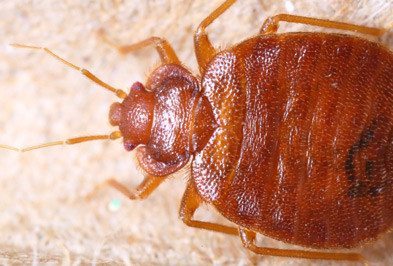Kings Exterminator Cincinnati: Effective Pest Management
Types of Bug Control: Which Approach Is Right for Your Infestation?
When faced with an insect infestation, the selection of an appropriate approach for parasite control is important in efficiently managing the scenario. By checking out the different types of pest control techniques offered, individuals can make educated choices customized to their special circumstances, guaranteeing a much more efficient and sustainable outcome in pest elimination.
Chemical Pest Control
Chemical bug control includes using synthetic or naturally acquired chemicals to manage and get rid of pest populaces properly. This method is generally utilized in agriculture, forestry, and property settings to fight a vast range of insects, including weeds, rodents, and insects. The use of chemical pesticides can give fast and targeted services to pest invasions, making it a prominent choice for many individuals and businesses.
One of the essential benefits of chemical parasite control is its ability to promptly get rid of parasites, decreasing the risk of damages to plants, property, and human wellness. By utilizing certain chemicals that target particular parasites, this approach can properly manage invasions while reducing harm to valuable microorganisms and the setting when used correctly.
Nonetheless, using chemical insect control likewise elevates concerns regarding prospective unfavorable impacts on non-target types, water sources, and human wellness. It is vital to follow security guidelines, apply chemicals sensibly, and think about alternative insect control approaches to lessen these risks and guarantee sustainable pest monitoring practices.
Biological Insect Control
Organic bug control, also called biocontrol, makes use of living organisms to take care of and decrease pest populations normally. This method harnesses the power of nature to manage parasites without the demand for synthetic chemicals. Biocontrol can entail the introduction of all-natural enemies of the pest varieties, such as parasites, pathogens, or killers, to subdue insect populations. By making use of the parasite's all-natural predators or microorganisms, biological parasite control provides a lasting and ecologically pleasant remedy to pest monitoring.

Mechanical Parasite Control
Making use of hand-operated and physical techniques to take care of insect populaces, mechanical pest control uses an alternative strategy that does not count on the usage of living organisms or synthetic chemicals. This technique involves using obstacles, catches, or other tools to literally hinder or get rid of insects. By obstructing pest entry factors or setting up catches to catch them, mechanical insect control can effectively decrease invasions without presenting chemicals right into the atmosphere.
One typical instance of mechanical insect control is using mesh screens on doors and home windows to stop bugs from getting in structures. This straightforward yet effective method functions as a physical obstacle, keeping insects out while permitting appropriate air flow. Furthermore, tools best indoor termite treatment like mousetraps, fly swatters, and ultrasonic repellents fall under the mechanical pest control classification.
While mechanical bug control techniques can be labor-intensive and call for regular surveillance and maintenance, they offer a ecologically friendly and sustainable solution for managing parasite invasions. By incorporating different mechanical techniques, homeowner can produce a thorough pest control technique that minimizes reliance on chemical pesticides.
Physical Parasite Control

Some typical physical parasite control techniques consist of the usage of barriers such as webs or screens to avoid pest entry, catches to record and remove insects, and hand-picking to physically get rid of pests from plants or structures. In addition, methods like warmth treatments can be made use of to regulate insects like bed insects by elevating the temperature level to levels that are dangerous to the pests.
Physical bug control is particularly beneficial in integrated insect monitoring (IPM) strategies, where several parasite control methods are incorporated for efficient pest management while reducing the usage of chemicals. By making use of physical pest control strategies, people can effectively attend to bug problems with minimal ecological impact.
Integrated Insect Monitoring
When carrying out Read More Here physical parasite control techniques as component of insect management approaches, Integrated Insect Management (IPM) becomes a comprehensive strategy that leverages numerous strategies to effectively control pest populaces. IPM concentrates on long-term avoidance of insects with a combination of organic, social, physical, and chemical tools tailored to details pest problems. By incorporating multiple control tactics, IPM aims to decrease the risks linked with bugs while also minimizing reliance on chemical services.
One trick aspect of IPM is the emphasis on surveillance and assessing pest populaces to determine the most suitable control approaches. This aggressive approach permits very early treatment and targeted techniques, resulting in more effective termite control professional insect administration. Additionally, IPM promotes eco-friendly methods by prioritizing non-chemical control methods and only utilizing chemicals as a last hope.
Conclusion

By making use of the insect's natural killers or microorganisms, organic parasite control offers a lasting and eco friendly remedy to pest management. - Kings exterminator cincinnati
Using physical and manual approaches to take care of pest populaces, mechanical parasite control provides an alternate technique that does not count on the usage of living organisms or synthetic chemicals.An effective method to managing insect populations without counting on chemical or organic methods entails the use of physical pest control strategies.When applying physical bug control techniques as part of parasite administration techniques, Integrated Pest Management (IPM) emerges as a detailed strategy that leverages numerous methods to effectively regulate pest populations. Chemical parasite control involves the usage of pesticides, organic pest control makes use of natural killers, mechanical pest control entails physical barriers, physical insect control consists of trapping or getting rid of pests, and incorporated pest administration incorporates numerous techniques for an all natural method to pest control.